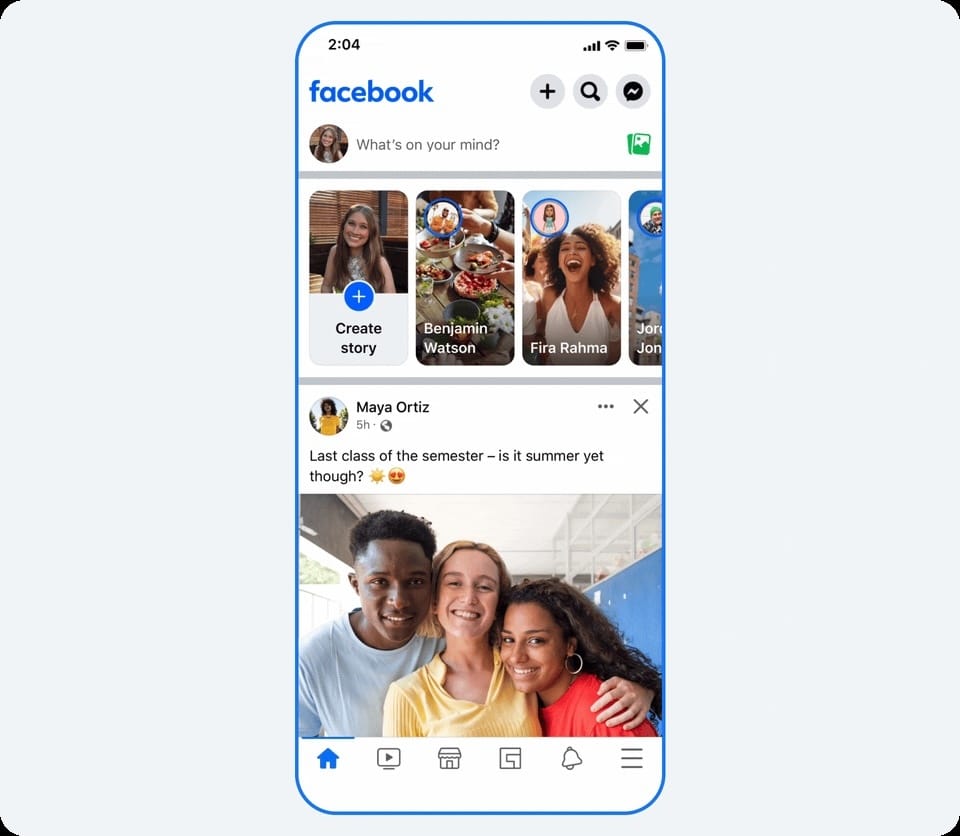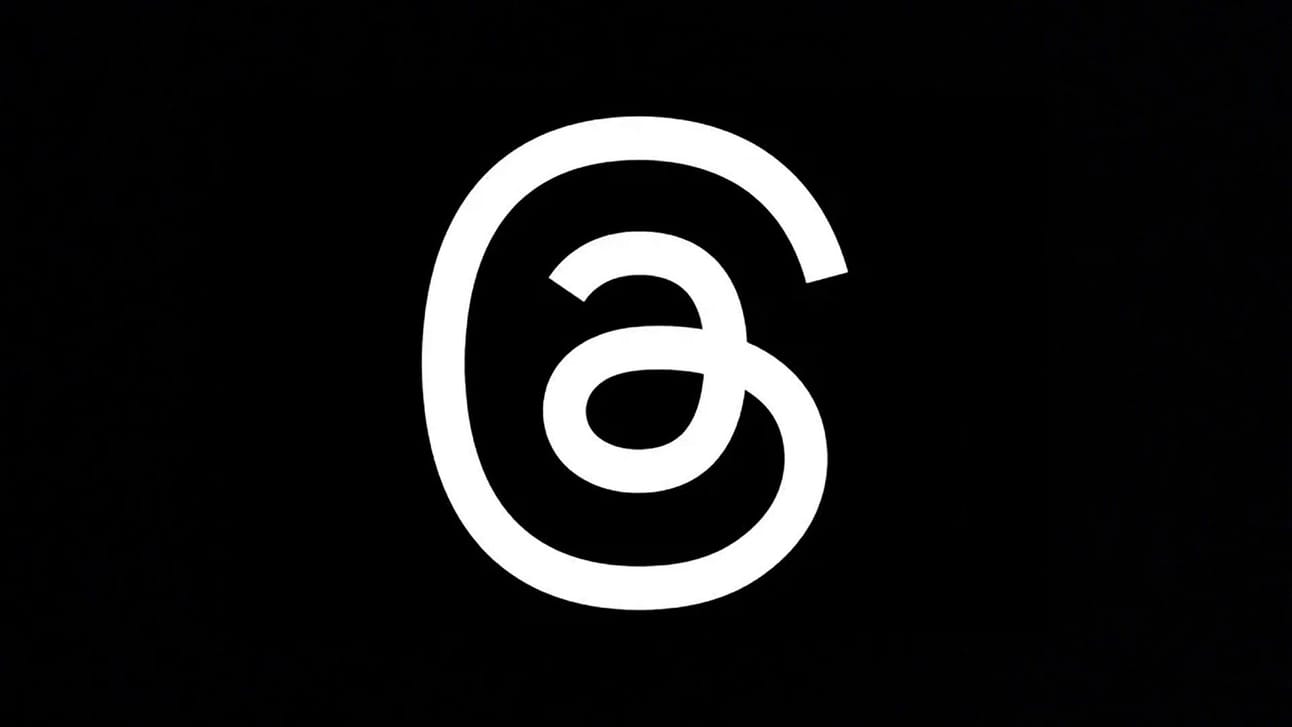
You might have noticed that there wasn't a newsletter last week. There's a good reason for this! A week ago today, my wife and I welcomed a healthy baby girl into our lives. If you have any good parenting tips, send them my way! Now, let’s get into it…
TODAY’S EDITION
Facebook adds a full-screen, video player that brings together Reels, long videos, and Lives.
Instagram helps creators encourage their followers to sign up for post notifications with a new sticker.
Threads starts incentivizing creators to post through an invite-only bonus program.
Spotify adds video-based courses as it continues its expansion beyond music.
ChatGPT adds links to publishers and creators in responses.
VSCO gets more social with Discussions.
DEEP DIVE
Facebook's New Video Player Demonstrates a Shift in How Platforms Are Approaching Video Content

Facebook announced updates to its video experience, including a full-screen video player that displays Reels, long-form videos, and Lives.
How It Works
The player allows users to scroll through videos of different lengths recommended by Facebook. By default, all videos appear in a vertical format. However, users can view horizontal videos in landscape mode by rotating their mobile devices. Improved controls enable users to rewind, pause, or fast-forward videos.
Embracing TikTok’s Influence
Facebook's update introduces a TikTok-inspired experience, similar to TikTok’s For You Page. This allows Facebook creators to share videos in a variety of formats - short, long, and live - to be discovered in a centralized, personalized feed.
Platforms Embrace All Video Formats
This update highlights a trend in social media platforms aiming to host all types of video content, not just one specific format - short-form, long-form, or live video.
TikTok encourages creators to share videos that are over a minute long, and Instagram is testing Reels up to three minutes long. Meanwhile, Snapchat recently announced support for longer videos shared to Stories and Spotlight, which will likely merge eventually.
Late adopters like Twitch and LinkedIn added dedicated feeds for short-form videos to complement their live streaming and video-on-demand (VOD) features. YouTube is improving its live streaming experience by making live streams discoverable in the Shorts feed.
But Why?
Social media platforms are increasingly becoming one-stop shops. Diversifying the types of video content supports this trend. Additionally, supporting different video formats can enhance user engagement, increase time spent in-app, and provide new advertising opportunities.
It's no secret that platforms have had challenges monetizing short-form video content. By launching feeds where short-form and long-form video content coexist, they gain more flexibility in utilizing tried-and-true solutions like pre-roll and mid-roll ads on long-form videos while still experimenting with ads between short-form vides and overlaid on them.
What it Means For Creators
Firstly, creators should consider developing a Facebook strategy due to these updates, which include a feed powered by an interest graph, similar to TikTok. Also, the potential TikTok ban further reinforces the need for creators to diversify their platforms.
Secondly, creators producing videos in various formats will likely benefit from discovery, performance, and monetization. In contrast, creators focusing on a single format may find it increasingly challenging to reach audiences and generate revenue.
These constant changes can burden creators by requiring them to do more work or adapt their strategies, but that is true for all businesses to an extent. Thankfully, the emergence of AI does make this easier than before, as there are apps and tools that creators can leverage to turn live streaming content into long-form, on-demand video content and then, of course, short-form video content.
NEWS, TRENDS, AND INSIGHTS
Instagram Adds a 'Notify' Sticker for Users to Opt-In to Post Notifications from Creators

Instagram has added a ‘Notify‘ sticker for Stories. When creators share it, viewers can opt-in to receive notifications when they post certain types of content—posts, Stories, Reels, and Live Videos.
Why It Matters: Given the high volume of daily content, creators often reach only a fraction of their followers. The 'Notify' sticker allows creators to prompt followers to turn on notifications for their most valued content. This enhances the chances of followers viewing their content instead of depending solely on the algorithm.
Threads Is Testing An Invite-Only Bonus Program To Incentivize Creators

Threads
Threads is testing an invite-only bonus program that compensates creators based on the performance of their posts and/or the number of posts they create. However, not all posts are eligible for bonuses. These include branded content posts and posts with watermarks from third-party apps.
Why It Matters: Threads aims to drive its next phase of growth by offering cash incentives to creators, a strategy similar to what it has done for Facebook and Instagram. Given its invite-only nature, it might be targeting specific creators based on content that performs well on Threads or fills content gaps on certain topics.
Programs like these tend to yield mixed results. They often start as lucrative opportunities when platforms entice creators, but can lead to backlash if terms are altered or programs are discontinued. Therefore, creators should consider this as a short-term revenue stream, not a long-term opportunity.
Spotify Pilots Video-Based Courses Through New Partnerships with Learning Platforms

Spotify
Spotify is trialing video-based courses in the UK through collaborations with learning platforms BBC Maestro, PLAYvirtuoso, Skillshare, and Thinkific. These courses are organized into categories such as 'Get Creative' and 'Learn Business' and are featured alongside music, podcasts, and audiobooks.
Free and Premium subscribers can access two lessons for free before deciding to purchase additional ones via a dedicated website. Revenue will be split between the course publisher, creator, and Spotify.
Why It Matters: This initiative offers creator educators the chance to reach a much larger audience, starting with Spotify's 25 million users in the UK. Moreover, these audiences will be relevant, as Spotify plans to use its personalized recommendation system to suggest courses based on users' listening habits and searches.
This move is in line with the growing trend of creators sharing their knowledge, expertise, and insights through digital courses to generate revenue and meet consumer demand for creator-led educational content. According to Thinkific, 62% of people are more interested in creators who make digital content for educational purposes than entertainment.
ChatGPT Now Provides Links to Original Sources in its Responses

OpenAI
ChatGPT, for paid users, now provides links in its responses when it searches the web. This allows users to see the source of the information, including the publisher's or creator's website, which is provided in parentheses with a hyperlink.
Why This Matters: Many publishers and creators have expressed concerns over AI tools like ChatGPT. These tools use data from the internet to build their large language models, often without crediting the original contributors. The inclusion of links in responses increases transparency and credits the sources. This change could help drive traffic to the websites of publishers and creators who are contributing to responses, as users may want to explore more of their content.
VSCO Introduces New Commenting Feature Discussions

VSCO
VSCO has introduced Discussions, a new commenting feature for Plus and Pro Members. Previously exclusive to Spaces, creators can now enable this feature on any post. This allows other users to comment on posts, such as asking about a creator's process or providing feedback. Notably, Discussions don't have a count and don't influence post visibility.
Why It Matters: Discussions adds another social component to VSCO, supplementing previous releases like profile customization and updated messaging. This feature is essential as comments are central to social media platforms.
VSCO has been adding more features found on platforms like Instagram and TikTok. However, they do this thoughtfully to maximize benefits for creators and minimize potential harm. For instance, since Discussions don't affect post visibility, creators can focus on sharing content that represents them instead of content designed for an algorithm.
For more news, trends, and insights on the creator economy from the week, including YouTube's addition of Members-Only Shorts and the expansion of Spotify's partnership with Universal Music Group, visit my website.
TOOL OF THE WEEK

beehiiv
Welcome to a new series where I'll share some of the tools and services I use and recommend. Please note this may include affiliate links.
What better way to begin than with beehiiv? Last spring, I started using beehiiv to distribute my newsletter, in addition to LinkedIn. I wish I had made the switch sooner due to its suite of audience engagement, monetization, and analytics tools.
Whether you're starting a newsletter for the first time or looking to migrate an existing one, beehiiv is the way to go. You can get started with a complimentary 30-day trial. Plus, as a special offer, enjoy a generous 20% off the first 3 months of any paid plan.
WHAT I’M READING
The Information hosted its second annual Creator Economy Summit this week If, like me, you were unable to attend, check out Lia Haberman’s recap of the event to get the details on key topics and themes.
If you've noticed more CEOs appearing in your LinkedIn feed, it's because they're increasingly acting as brand ambassadors for their companies. CEOs like Morgan DeBaun of Blavity and Everette Taylor of Kickstarter share how they're using LinkedIn.
Instagram shared tips and tricks for sharing Stories, including how to mention someone in a Story after you have posted it, turning live photos into Boomerangs, and making your emojis glow.
THANK YOU
Thank you for reading! If you've enjoyed this, please consider sharing it with a colleague or friend. If you have any feedback, ideas, tips, or questions or would like to advertise in the newsletter or collaborate, please don't hesitate to reply to this email, reach out here, or send me a DM.
